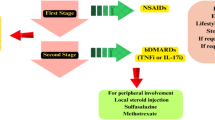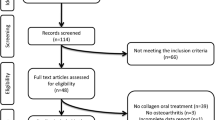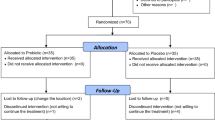Abstract
Oxidative stress is thought to play a role in the pathogenesis of fibromyalgia. We examined the hypothesis that oxidative stress was increased in patients with fibromyalgia and related to the severity of symptoms. Urinary F2-isoprostane excretion was measured in 48 patients with fibromyalgia and compared to those of 96 control subjects. In patients, we examined the association between oxidative stress and symptoms. Patients with fibromyalgia were significantly more symptomatic than control subjects, but urinary F2-isoprostane excretion did not differ significantly (2.3 ± 1.9 vs. 2.8 ± 2.2 ng/mg creatinine, p = 0.16). In patients with fibromyalgia, F2-isoprostane excretion was associated with fatigue visual analog scale (rho = 0.30, p = 0.04) but not with pain, quality of life, functional capacity, depression, number of tender points, or overall impact of fibromyalgia. Oxidative stress is not increased in patients with fibromyalgia, but as was previously found in patients with systemic lupus erythematosus, oxidative stress was associated with fatigue.

Similar content being viewed by others
References
Wang ZQ, Porreca F, Cuzzocrea S et al (2004) A newly identified role for superoxide in inflammatory pain. J Pharmacol Exp Ther 309(3):869–878
Vecchiet J, Cipollone F, Falasca K et al (2003) Relationship between musculoskeletal symptoms and blood markers of oxidative stress in patients with chronic fatigue syndrome. Neurosci Lett 335(3):151–154
Keenoy B, Moorkens G, Vertommen J, De Leeuw I (2001) Antioxidant status and lipoprotein peroxidation in chronic fatigue syndrome. Life Sci 68(17):2037–2049
Bagis S, Tamer L, Sahin G et al (2005) Free radicals and antioxidants in primary fibromyalgia: an oxidative stress disorder? Rheumatol Int 25(3):188–190
Morrow JD, Chen Y, Brame CJ et al (1999) The isoprostanes: unique prostaglandin-like products of free-radical-initiated lipid peroxidation. Drug Metab Rev 31(1):117–139
Cracowski JL, Durand T, Bessard G (2002) Isoprostanes as a biomarker of lipid peroxidation in humans: physiology, pharmacology and clinical implications. Trends Pharmacol Sci 23(8):360–366
Lawson JA, Rokach J, FitzGerald GA (1999) Isoprostanes: formation, analysis and use as indices of lipid peroxidation in vivo. J Biol Chem 274(35):24441–24444
Stein CM, Tanner SB, Awad JA, Roberts LJ, Morrow JD (1996) Evidence of free radical-mediated injury (isoprostane overproduction) in scleroderma. Arthritis Rheum 39(7):1146–1150
Avalos I, Chung CP, Oeser A et al (2007) Oxidative stress in systemic lupus erythematosus: relationship to disease activity and symptoms. Lupus 16(3):195–200
Wolfe F, Smythe HA, Yunus MB et al (1990) The American College of Rheumatology 1990 Criteria for the Classification of Fibromyalgia. Report of the Multicenter Criteria Committee. Arthritis Rheum 33(2):160–172
Asanuma Y, Oeser A, Shintani AK et al (2003) Premature coronary-artery atherosclerosis in systemic lupus erythematosus. N Eng J Med 349(25):2407–2415
Chung CP, Oeser A, Raggi P et al (2005) Increased coronary-artery atherosclerosis in rheumatoid arthritis: relationship to disease duration and cardiovascular risk factors. Arthritis Rheum 52(10):3045–3053
Morrow JD, Roberts LJ (1994) Mass spectrometry of prostanoids: F2-isoprostanes produced by non-cyclooxygenase free radical-catalyzed mechanism. Methods Enzymol 233:163–174
Pincus T, Summey JA, Soraci SA Jr, Wallston KA, Hummon NP (1983) Assessment of patient satisfaction in activities of daily living using a modified Stanford Health Assessment Questionnaire. Arthritis Rheum 26(11):1346–1353
Krupp LB, LaRocca NG, Muir-Nash J, Steinberg AD (1989) The fatigue severity scale. Application to patients with multiple sclerosis and systemic lupus erythematosus. Arch Neurol 46(10):1121–1123
Spitzer WO, Dobson AJ, Hall J et al (1981) Measuring the quality of life of cancer patients: a concise QL-index for use by physicians. J Chronic Dis 34(12):585–597
Welssman MM, Sholomskas D, Pottenger M, Prusoff B, Locke B (1977) Assessing depressing symptoms in five psychiatric populations: a validation study. Am J Epidemiol 106(3):203–214
Burckhardt CS, Clark SR, Bennett RM (1991) The fibromyalgia impact questionnaire: development and validation. J Rheumatol 18(5):728–733
Evans AR, Junger H, Southall MD et al (2000) Isoprostanes, novel eicosanoids that produce nociception and sensitize rat sensory neurons. J Pharmacol Exp Ther 293(3):912–920
Eisinger J, Zakarian H, Pouly E, Plantamura A, Ayavou T (1996) Protein peroxidation, magnesium deficiency and fibromyalgia. Magnes Res 9(4):313–316
Ozgocmen S, Ozyurt H, Sogut S, Akyol O, Ardicoglu O, Yildizhan H (2006) Antioxidant status, lipid peroxidation and nitric oxide in fibromyalgia: etiologic and therapeutic concerns. Rheumatol Int 26(7):598–603
Kennedy G, Spence VA, McLaren M, Hill A, Underwood C, Belch JJF (2005) Oxidative stress levels are raised in chronic fatigue syndrome and are associated with clinical symptoms. Free Radic Biol Med 39(5):584–589
Acknowledgements
This study was supported by grants HL65082, GM15431, P60 AR056116, and 1UL1RR024975 from the National Institutes of Health.
Disclosures
None.
Author information
Authors and Affiliations
Corresponding author
Additional information
Jason D. Morrow: deceased
Rights and permissions
About this article
Cite this article
Chung, C.P., Titova, D., Oeser, A. et al. Oxidative stress in fibromyalgia and its relationship to symptoms. Clin Rheumatol 28, 435–438 (2009). https://doi.org/10.1007/s10067-008-1072-0
Received:
Revised:
Accepted:
Published:
Issue Date:
DOI: https://doi.org/10.1007/s10067-008-1072-0




